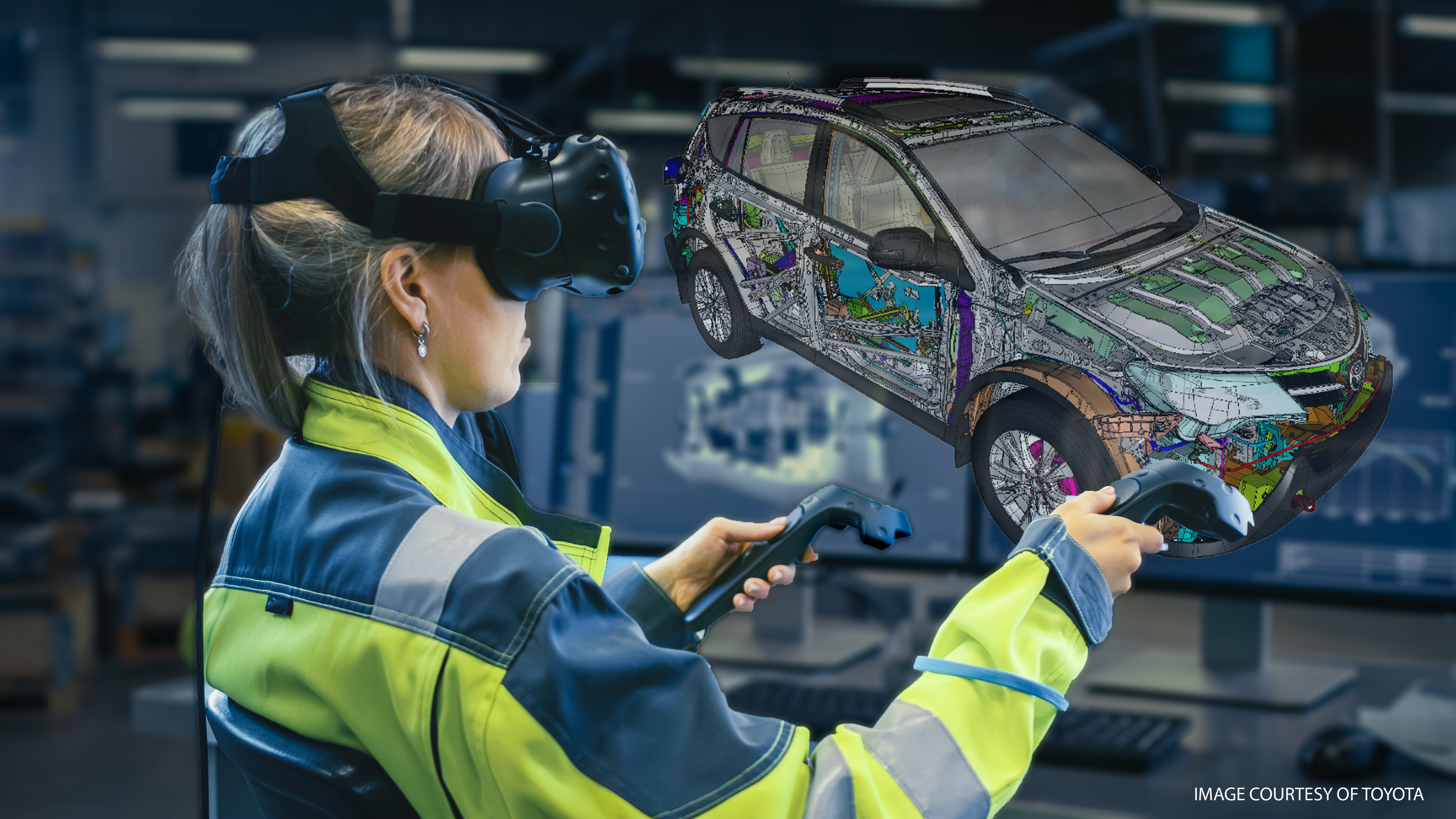3D Digital Twin An Alternative to MBE
MBE - The Model-Based Enterprise | The 3D Digital Twin is an Alternative
Model-based enterprise (MBE) is a term used in manufacturing to describe a strategy where an annotated 3D model of a complete product is the authoritative information source for all activities in that product's lifecycle.[1][2]
A key advantage of MBE is that it replaces digital drawings. In MBE, a single 3D model contains all the information typically found in an entire set of engineering drawings, including geometry, topology, dimensions, tolerances, materials, finishes, and weld call-outs.[3]
The 3D Digital Twin
There are many advantages for companies that design and manufacture complex products for implementing MBE. However, the undertaking can be very costly and risky.
We want to offer an alternative to what is considered mainstream MBE solutions, the 3D Digital Twin.
The 3D Digital Twin can be used to implement “MBE-light”. Implementing MBE is a huge undertaking. Using the 3D Digital Twin approach will save your company time and money and be less risky.
Attributes a Robust 3D Digital Twin
- Complete and accurate graphical representation containing all parts and subassemblies.
- Hierarchical part structure with multiple Bills of Material (BOM) i.e. engineering eBOM, manufacturing mBOM, & service sBOM to support multiple downstream use cases.
- CAD independent: No CAD experience or licenses are required to use.
- Performance that supports fast, intuitive interactions on standard computers.
In other words, the 3D Digital Twin is visual, easy & fast to access, and complete with ALL data from the 3D CAD system. It could be used by the design department but is intended to support functions downstream from design that can benefit from easily accessible, accurate, detailed product information.
3D Digital Twin Use Cases
These are just some of the use cases for a 3D Digital Twin.
Assembly Planning
The Production Engineering team needs to plan the best way to build the product, regardless of how it was designed, regardless of the CAD systems used, regardless of parts designed in-house and those purchased.
They need a virtual product that is complete, accurate, and has the complete structured Bill of Materials. This is the foundation of their planning. XVL does this.
Assembly Optimization & Safety
Once the product plan is complete, it is time to optimize the process for workability and review for safety.
The 3D Digital Twin enables assembly simulations and detailed analysis of the production plan, which is much easier to do with XVL than the raw CAD data.
Technical Communications
Authoring good documentation is challenging. Often companies will resort to pictures of prototypes, screenshots from the CAD system, or even producing drawings by hand using a general-purpose drawing program.
With XVL, Tech Pubs can easily create any drawing they need using the complete virtual product, including 3D animations.
IoT and Digital Data Twins
Companies that produce complex products are embracing IoT and Digital Data Twins. Digital Data Twins are digital models of individual products – not just the product model, but each individual product (e.g. serial number).
With XVL, the 3D Digital Twin is an excellent way to present the Digital Data Twin's information.
How to Implement a 3D Digital Twin
It all starts with your 3D CAD models, which are converted into XVL. A single XVL file contains a complete product, bringing all of the 3D CAD together in a lightweight and CAD-accurate file.
Click below to download the complete whitepaper.

